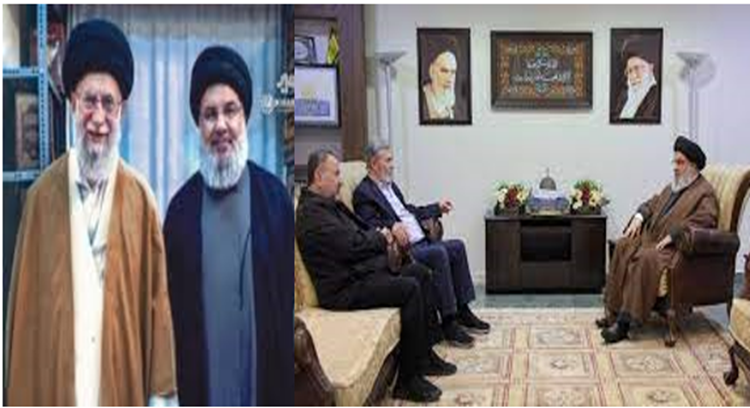
In a week marked by escalating tensions and fervent war rhetoric from Iranian state and proxy media, the address by Hezbollah Chief Hassan Nasrallah emerged as a focal point.
Nasrallah’s speech, interwoven with bombastic but ultimately hollow threats, mirrored the agenda set by Tehran, seeking to disassociate Hezbollah and Iran from the conflict in Gaza. This maneuver, initially interpreted by some as a de-escalation of the imminent conflict, was largely perceived as evidence of Tehran’s apprehension and a strategic retreat. To comprehend the underlying dynamics, a closer examination of the Iranian regime’s pronouncements is imperative.
Contradictorily, Iranian officials continue to affirm their allegiance to the so-called “Axis of Resistance,” while simultaneously distancing themselves from the Gaza events. Supreme Leader Ali Khamenei, in particular, aims to elude responsibility for his actions, engaging in a duplicitous strategy that hovers between war and peace.
Despite this, Iranian involvement in violent conflicts across the Middle East is an open secret, contributing to widespread socio-economic turmoil globally. Tehran’s objective is to assert its dominance as the linchpin of what it terms the “strategic depth” of its regime.
#Iran’s Imprint on the Ongoing #MiddleEastConflicthttps://t.co/GREb9XYy45
— NCRI-FAC (@iran_policy) November 1, 2023
On October 30, a notable development occurred when the Kayhan newspaper, influenced by Khamenei’s office, released a transcript of a Q&A session. Hossein Shariatmadari’s response to a query was telling: “Don’t ask when the Islamic Republic will enter Gaza, but when it will leave.” He underlined the unity between Iran and resistance groups spread across the Islamic world, from Gaza to Yemen, Iraq, and Syria, asserting readiness for intervention as needed.
However, this apparent show of strength may well be a facade concealing inherent weaknesses. The Iran-Iraq war taught Tehran that it lacks the ideological influence to sway its own populace, let alone others. Thus, it exploits grievances in other nations, fostering division and seeking influence.
Khamenei knows his regime and its foreign proxies lack the moral and professional capacity to guide a nation towards peace and prosperity. Their forte lies in sustaining conflict, using external adversaries as scapegoats for their own failures and lack of merit in problem-solving.
#Iran’s Regime: A Major Obstacle in the Way of Enduring Peace in the Middle Easthttps://t.co/7qMo270yt2
— NCRI-FAC (@iran_policy) August 10, 2022
A review of the situations in Iraq, Lebanon, Gaza, and Yemen reveals the true nature of entities aligned with Iran. Under Khamenei’s influence, millions in the region face poverty and ongoing strife.
The only path to lasting peace in the Middle East and eliminating medieval extremism disguised as religious doctrine is to back forces capable of challenging Tehran’s regime ideologically, structurally, and strategically. This approach could instigate meaningful change within Tehran itself, offering hope for a more peaceful and prosperous future in the region.

MEK Iran (follow us on Twitter and Facebook), Maryam Rajavi’s on her site, Twitter & Facebook, NCRI (Twitter & Facebook), and People’s Mojahedin Organization of Iran – MEK IRAN – YouTu
